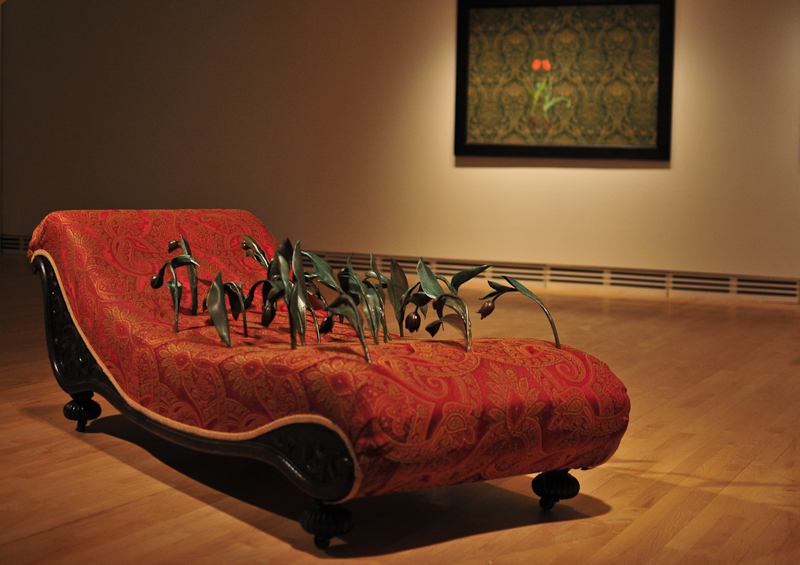Carleton University Art Gallery (CUAG) smells different.
There’s a warm scent of fresh-cut wood in the air, born out of the display taking up much of one corner. Sectioned off with wooden pegs and thick rope, Marc Courtemanche’s project, “The Studio,” is one of many art installations and pieces that make up part of CUAG’s summer exhibitions.
It’s a new take on an old trade. For the summer, the gallery will play host to three exhibitions looking at handmade and craft art, and its place in the often hierarchal art world.
“For a long time within the art world, craft has always had this lower status,” Heather Anderson, curator of the exhibition Making Otherwise: Craft and Material Fluency in Contemporary Art, said. “I was interested in exploring these very false binaries . . . around this opposition between ideas and hand-making, this false idea as if making something by hand is divorced from ideas, or divorced from intellectual activity.”
Janet Morton, an artist whose work looks at the process of knitting through video, said she likes craft mediums because of the lack of hierarchy within the genre. “All the materials contain their own unique properties, but there is no hierarchy,” she said.
The top floor of the gallery is shared between two other exhibitions, Inuit Art: Skin Deep and Imaginary Worlds: Scottie Wilson and Art Brut, with Anderson’s taking up the bottom level. Alongside Courtemanche’s “The Studio” are the works of six other artists. Ursula Johnson’s handmade Mi’kmaq baskets are an example of how craft and ideas can go hand-in-hand.
Johnson was taught the art of basket weaving by her grandmother and incorporated the practice into her art as a way of looking at aboriginal identity, Anderson said.
“And for her, that knowledge, those specific skills, are so integral to her project, which is creating these portraits of individuals that refer to different Indian membership status codes,” Anderson said. “So I think in a way she’s integrated a very traditional basket weaving technique into these really complex ideas that are part of Canadian legislation of how Indian status is defined.”
The gallery also feels different.
The walls are enveloped in warm quilts and hand-embroidered portraits. A divan set to the side of the gallery space begs to be lounged upon, despite the wilted tulips sprouting from it. In many ways, the exhibition discards the gallery as a withdrawn space. It almost entices the viewer to reach out and touch the pieces.
The effort of the artists is evident, another aspect of craft that the exhibition looked at — the value of labour. Morton said she often looks at the disconnect between labour versus time and value.
“I decided I wanted to return to a time-based medium because so much of what this work is about is process,” she said.
Often, Morton said, she is asked “how long did that take,” highlighting the value society puts on time, rather than necessarily the product.
Her pieces look at the process of unravelling labour through video. In one, “Road Trip,” a man walks through the outskirts of Guelph, Ont. wearing a white, knitted suit. As the camera follows him, he unravels the suit until he is wearing nothing but shoes and socks.
In her other work, “Shiny Heart,” Morton records a musician who plays a tuba while she envelops the instrument in grey yarn. The video was originally shot as Morton unravelled her work, but is played in reverse to give the illusion of the work being created, rather than disassembled.
“I became really interested in that liminal space where you’re not quite sure if things are coming apart or coming together,” she said.
Despite the time and energy they demand, Morton said the value of hand-made items is important.
“Everything is online, everything is virtual and digital,” she said. “When we teach people to hold materials . . . there’s something really sensual about having experienced this with things that are real, and not virtual.”
The exhibition runs until Sept. 14.
Photographer Kyle Fazackerley illustrated CUAG’s new summer exhibitions in the following slideshow.
[slideshow gallery_id=”13″]





